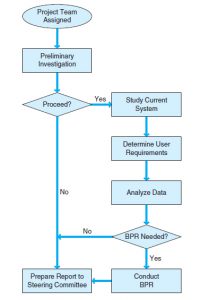Software engineering may sound like an exceptionally complicated, somewhat dull and confusing subject but, despite some occasionally hard-to-understand jargon, it is in fact a very useful, interesting and rewarding concept that should be understood by the masses. To begin to understand all that software engineering involves we must first take a step back and strip the phrase of its many meanings. The word software itself refers to a collection of programming code, its documentations and its associated libraries. This software can then be tailored towards a specific requirement and is thus called a software product. The word engineering, on the other hand, refers to the development of products, specifically the development of products via scientific methods and principles that have already been well-defined and established previously.

Software engineering is primarily associated with the development of software products via the use of scientific methods, principles and procedures. The overall outcome is a reliable and efficient software product that can be used by the masses.
The Need for Software Engineering
There are several key factors that determine why companies have a strong need for software engineering to assist with any type of project. One such key factor is due to the higher rate of changes in the market, each user has different requirements that are constantly changing on a regular basis, therefore software engineering is needed to bridge this gap.
Software engineering is an ever-changing market as the environment in which new technology exists is constantly changing. This heralds the need for software engineering as new technology requires the scientific methods and procedures that are associated with software engineering. Similarly, larger software also require much more software engineering as they have more room for potential error.
Perhaps the greatest factor as to why software engineering remains a necessary part of the industry is because of the constantly changing nature of the industry. Software is in a constant state of dynamic shifting, always growing and altering itself to meet the new and strenuous demands of society. That is why it is exceptionally important, now even more so than ever, that strategies for software engineering are put in place so that software products can be scientifically tested and approved. This way, a high-quality product is able to be manufactured.
Software Development Life Cycle

The Software Development Life Cycle (SDLC) is a very well-established and structured stage-process that software engineers closely follow in order to achieve their intended product. The sequence of SDLC should be followed closely by software engineers if they intend on making a product that is of high-quality. The steps are as follows:
Communication
The first step of the SDLC, this is where the software engineer is contacted by the user and a request for the software product is made. Terms are discussed, and the accepted request is submitted.
Resource Gathering
The next step of the SDLC sees the beginning of the development team’s journey. Here the team has several discussions with their companies stakeholders and they discuss the requirements of the task at hand, gathering as much information as possible. These requirements are then isolated into separate groups, namely the user requirements, functional requirements and the system requirements. These requirements are often collected via the studying of the existing system software, by conducting survey market research or by interviewing various developers and prior users of the previous site.
Feasibility Study
Once all requirements and resources are gathered, the development team then creates a draft plan of the engineering process. After this initial plan is drawn up the team can then fully dive in to whether or not this software can be feasibly made with the resources they currently have at their disposal. The product must be both practically and financially feasible for the company as well as technologically possible.
System Analysis and Software Design
 If the software product is found to be feasible then a roadmap is drawn up. This map will plan out the specifications for the software and what the team should achieve by when in order to meet the deadline. An analysis of the chosen system must be done in which the limitations are discovered, and any issues can be resolved before design. After the initial system analysis, it is then time for the physical and logical design of the software to take place. Engineers are tasked with producing diagrams and data-flow charts as well as some basic code that will be used.
If the software product is found to be feasible then a roadmap is drawn up. This map will plan out the specifications for the software and what the team should achieve by when in order to meet the deadline. An analysis of the chosen system must be done in which the limitations are discovered, and any issues can be resolved before design. After the initial system analysis, it is then time for the physical and logical design of the software to take place. Engineers are tasked with producing diagrams and data-flow charts as well as some basic code that will be used.
Coding, Testing and Integration
The software engineers use the base code to begin programming the software and creating error-free executables for the application. The software is then tested thoroughly. Every area of the software is checked repeatedly in case any errors are found. Testing is broken up into isolated segments such as module testing, product testing and program testing. The software is then integrated with the databases on the program.
Implementation, Operation and Maintenance
The finished software is then implemented onto the user’s machines. Users are then trained on how to operate the software and continuous maintenance is carried out on the software by the original development team in the case of an unexpected error occurring.
